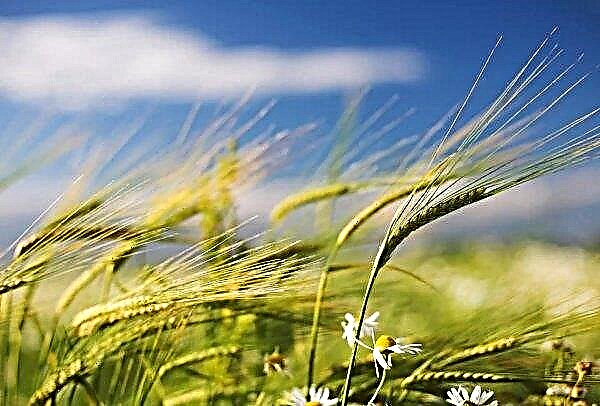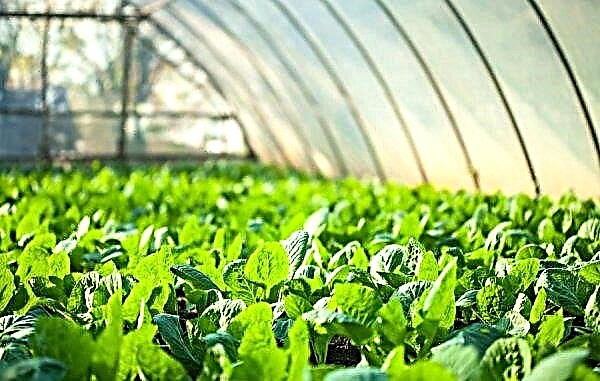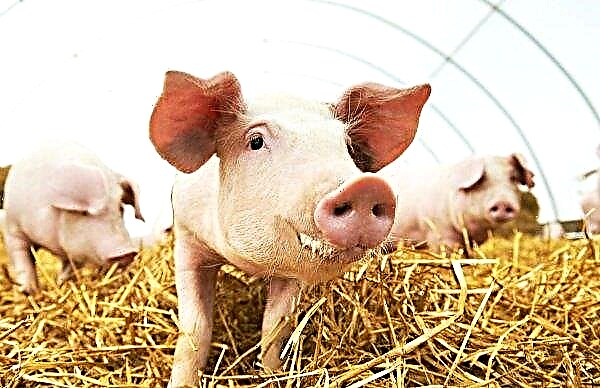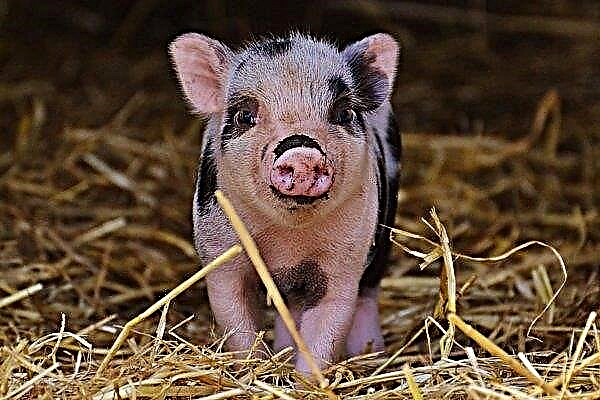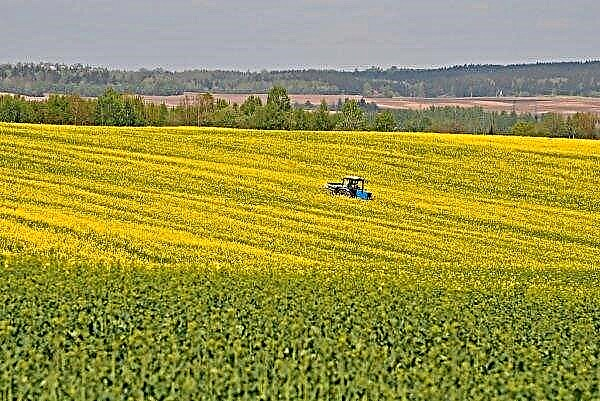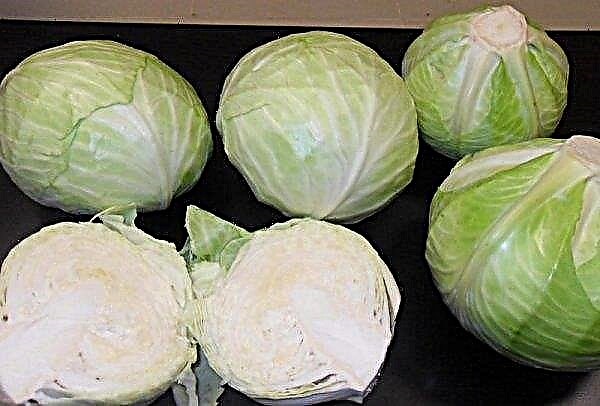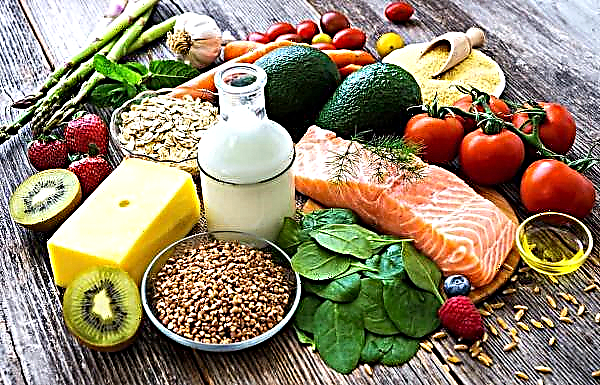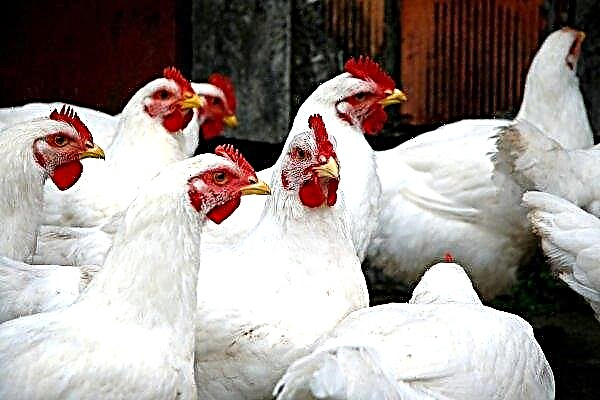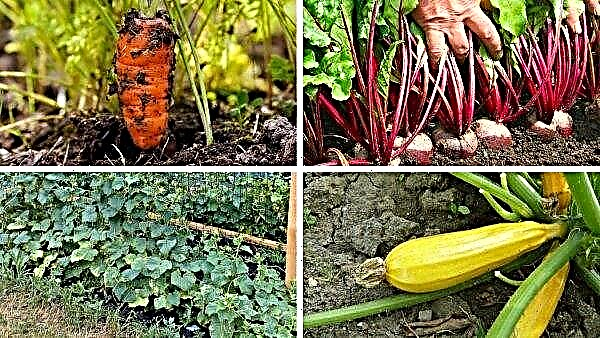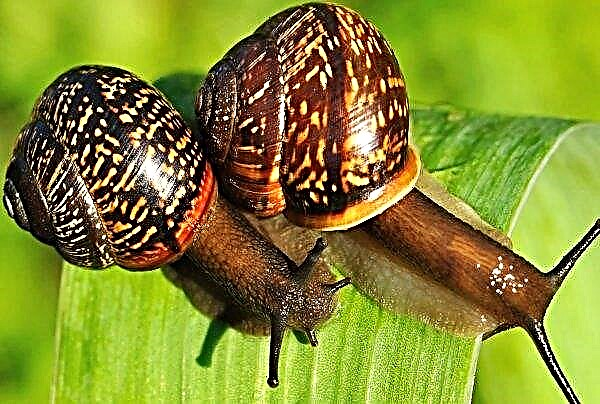A potato variety with the romantic name Cornflower is one of the achievements of Russian scientists, which is very popular. In addition to good yield indicators, this variety wins against the background of others with a high content of nutrients and resistance to many diseases. What is the difference between this variety of potatoes, what are the features of its cultivation and care - further in the article.
Variety breeding history
Cornflower was bred by breeders in Russia relatively recently. The official registration of the variety was carried out in 2014, when it was entered in the State Register, and it was recommended for cultivation. Appeared as a result of crossing a very popular and now potato variety Chugunkka and a special hybrid form called D31-88.
Recommended for cultivation in the Central, Central Black Earth, Northwest regions of the Russian Federation. Now it is actively spreading through the central territory and entering the markets of Ukraine and other countries.
Description and characteristic
The mid-early variety Cornflower is distinguished by a special appearance, as well as a number of other advantages.
Appearance of tubers and tops
The bushes grow medium in size and height, semi-straight. The tops are distinguished by a particularly bright green color and a special strength. The leaves on the bushes are medium, dark green, the flowers are small - reddish or purple. The tubers have an elongated oval shape, the surface is smooth, with small eyes on the peel. A distinctive feature of potatoes is the skin color - it is very unusual, in comparison with other varieties, of a dark blue-violet color. Thanks to him, the variety got its name. The sprouts of the plant are also dark blue.
The tubers have an elongated oval shape, the surface is smooth, with small eyes on the peel. A distinctive feature of potatoes is the skin color - it is very unusual, in comparison with other varieties, of a dark blue-violet color. Thanks to him, the variety got its name. The sprouts of the plant are also dark blue.
Did you know? Although potatoes are considered nutritious and nutritious, not a dietary product, average potatoes weighing about 100 g contain only 76 calories.
The flesh of a cream-colored potato. The average weight of a tuber can vary from 75 to 110 grams. The growing season is from 80 to 100 days.
Taste qualities
Cornflower has a particularly good taste. The pulp contains about 12.5-16% of starch. In tubers, there is a large amount of vitamin C and E, as well as carotenoids. Potato flesh is medium boiled, which allows it to be used for different purposes. When cleaning or heat treatment, it also does not darken.
The value of Cornflower is very high, as it has high antioxidant values and is great for dietary and balanced nutrition.
Grade stability
Potatoes do not tolerate low temperatures, the variety is very thermophilic and prefers a large amount of sun. If the temperature drops below zero - the plant dies. The best temperature for germination and tuber formation is not lower than + 10 ° C. It tolerates high temperatures (+25 ... + 30 ° C), but only in the presence of abundant and frequent watering. The resistance of the variety to moisture is quite high, since Cornflower prefers plentiful good irrigation (dies in very hot or dry weather, when the ground is too dry).
The resistance of the variety to moisture is quite high, since Cornflower prefers plentiful good irrigation (dies in very hot or dry weather, when the ground is too dry).
The variety is particularly resistant to cancer pathogens. Potatoes are also medium resistant to late blight, mosaic, wrinkled rot and scab. Rarely attacked by ring and dry rot. Among the minuses is susceptibility to the nematode.
Productivity
The cornflower yield is 20–50 tons per season (per 1 hectare of land) or about 70 kilograms per one hundredth of land. The marketability of fruits is 70–95%. Harvest keeping quality is especially high - 96% on average.
Pros and possible disadvantages
- Advantages of Cornflower:
- after germination of the sprouts, the crop can be removed after 70 days;
- the distinctive color of the fruit, for which the variety got its name;
- the bush grows quite compact, so it does not need frequent hills;
- high yields;
- wonderful keeping quality;
- resistance to many diseases;
- high starch content;
- great taste.
- The disadvantages of the variety:
- potatoes can be attacked by a nematode;
- tubers germinate quickly (due to the large number of small eyes on the shell), which makes storage difficult in winter;
- on acidic soils, the variety can be scab and produce a meager harvest.
This variety has significant differences from others, among which the color of tubers and indicators of pulp, which boils well, has a pleasant taste and has a beautiful color that does not darken when processed, are especially notable. In addition, the plant sprouts quickly enough and does not require special care. This variety differs from others and is resistant to many diseases, which makes the variety a welcome addition to any garden.
In addition, the plant sprouts quickly enough and does not require special care. This variety differs from others and is resistant to many diseases, which makes the variety a welcome addition to any garden.
Features of outdoor cultivation and care
Potatoes are just enough to plant; he also differs in unpretentiousness in leaving, which makes the planting process quite simple. But at the same time, special attention should be paid to the selection of seed material and its preparation. In addition, fertilizing the soil is an important point, as this will directly affect the yield of potatoes in the future.
Optimal terms and conditions for landing
Landing is carried out at that moment when night frosts pass. This may be the middle or end of March, depending on the climate.
Potatoes more like lighted areas of land that are well protected from the wind. The soil requirements are small, the only thing - there must be non-acidic soil, otherwise the variety will not produce a plentiful crop. If the earth is very heavy, you need to add a lot of organic fertilizers to it when preparing the holes. On swampy or peaty soils, the variety will bear fruit only after mandatory crop rotation and land reclamation. The soil itself should be dug up twice before planting seedlings.
On swampy or peaty soils, the variety will bear fruit only after mandatory crop rotation and land reclamation. The soil itself should be dug up twice before planting seedlings.
Important! Planting potatoes of this variety can only be carried out subject to the rules of crop rotation - the variety is planted after growing a variety of root crops, cucumbers, cabbage, legumes or pumpkin.
Preparation of planting material and planting pattern
It is very important to choose the right planting material. Due to the possibility of rot, it is important to choose healthy and dense tubers, without any signs of infection. Since they sprout quickly, it is important to adhere to the rules for storing the crop - it is desirable that it lay in cool places and in the dark. Dry cellars or pantries are ideal.
Around February, tubers are pulled out and laid in one layer so that they begin to germinate. You can speed up this process by sprinkling them with sawdust and regularly spraying from a spray bottle.
Before planting, the tubers are also decontaminated without fail to prevent the occurrence of late blight in the growth process (sprayed with solutions containing copper).
The planting scheme is quite simple and depends on the size of the tubers themselves. You can use these standard schemes: 70 by 20 centimeters or 60 by 30 (sometimes 25 if the tubers are small). That is, standard planting schemes are used, where the length of the beds can be 60 or 70 centimeters, and the distance between the tubers varies from 20 to 30 centimeters.
That is, standard planting schemes are used, where the length of the beds can be 60 or 70 centimeters, and the distance between the tubers varies from 20 to 30 centimeters.
The tubers are planted with their buds up to sprout faster. Depth is determined by the density of the soil - from 10-12 cm on the lungs to 4-5 cm on clay soils.
Frequency of watering and fertilizing
Top dressing and watering greatly affect fertility and yield. To obtain maximum performance, you need to regularly feed, as Cornflower loves fertile soil. The first fertilizer application is carried out before flowering (only on well-moistened soil).
Top dressing is added directly under the root. The interval between applications is approximately one and a half weeks. As fertilizers, chicken droppings, urea and manure are suitable.
Watering before flowering is carried out as necessary (only if the weather is very dry or hot). As soon as the flowering period begins, you need to start active watering, since at this moment tubers begin to form. Watering is carried out mainly in the evening or in cloudy weather three times a week, and if the weather is hot - then every day. After the earth is sure to loosen, and the bushes spud.
Watering is carried out mainly in the evening or in cloudy weather three times a week, and if the weather is hot - then every day. After the earth is sure to loosen, and the bushes spud.
Important! Do not use sprayers for watering. Moisture on the tops can cause late blight. Water flows only under the root.
Weed control
Mulching also affects crop yields. Removing weeds guarantees an increase in crop yield. For mulching, it is not recommended to use coniferous raw materials, as it oxidizes the earth, and this variety tolerates acidic soils very poorly.
During the growing season, bushes spud about three times. The procedure must be repeated until the gaps between the knolls disappear.
Major diseases and pests of the variety
Despite significant stability, the appearance of some ailments is still possible:
- Most often, after planting, late blight appears. To combat it, drugs with copper are used. You can also prevent the appearance of this fungus by regular application of mineral fertilizers.
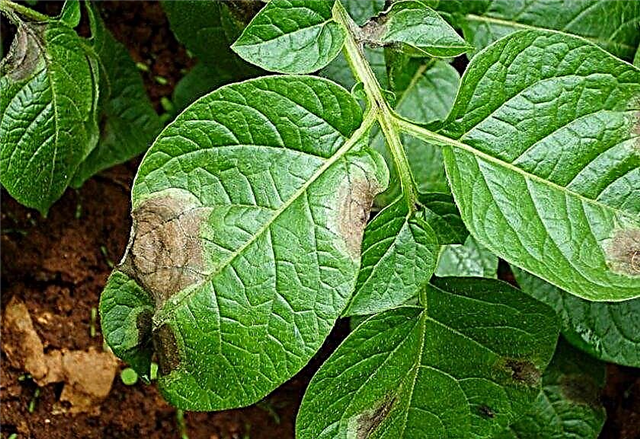
- Mosaic viruses (several different species may appear) are neutralized by fungicidal solutions and insecticides (to combat aphids, which are the main carrier of the virus).
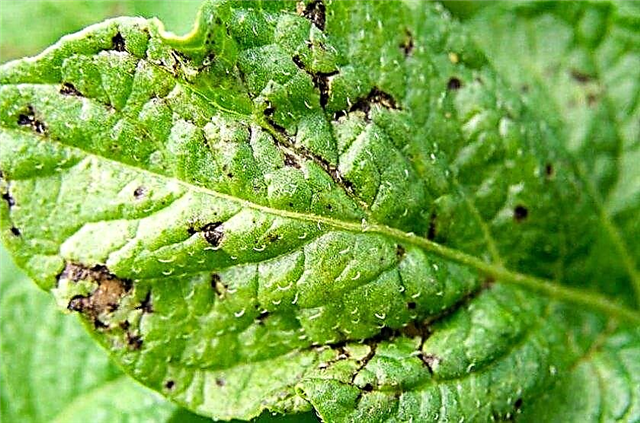
- With scab fungicides (such as Ditan, Prestige and others) are best used. These same tools help with different types of rot.
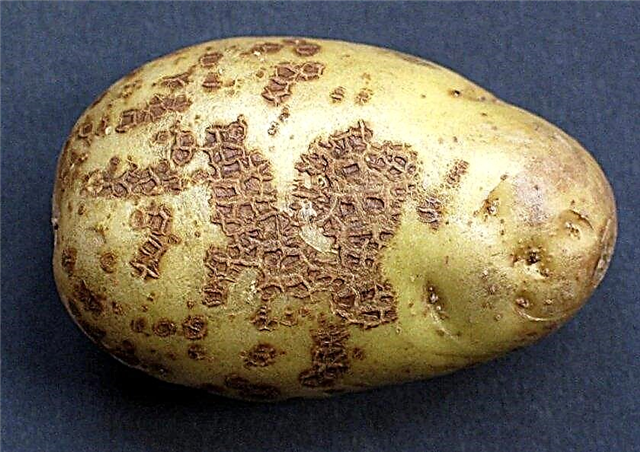
- If larvae or beetles appear on potatoes, including the nematode, which often infects the variety, should use wormwood-ash tincture. Also, drugs such as Albit or Bulba are good against worm infection of the nematode.
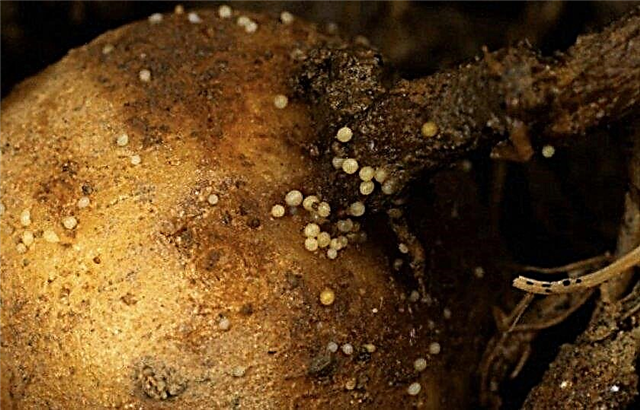
- To fight the Colorado beetles when planting, a handful of wood ash should be added to the pit (it will also serve as fertilizer), you can use the same means as with the nematode.

Sanitary treatment is carried out in early spring. If it was not for any reason, you need to spray already in adulthood.
Did you know? In history, once there was a "potato war" - it happened at the end of the XVIII century in Bavaria, when the king of Prussia and the emperor of Austria entered the battle for the Bavarian lands, castles and gold. Opponents were more concerned with trying to cut off each other's food supply routes, including potatoes that had become popular by then, than with real battles and attacks.
Harvesting and storage
Under good conditions, potatoes yield very large yields - from one hundredth you can get about 70 kg of healthy and large fruits, especially if the rules of crop rotation, fertilizers and irrigation are followed.
Potatoes ripen quickly, on average in 70–90 daysthat is, the crop can be obtained by the beginning of autumn or the end of summer. It is stored for a long time (on average 3-4 months), but can germinate with high humidity in the room or in sunlight. It is better to keep it in a cool and dry place, without direct sunlight and with good air circulation. It is undesirable for the room temperature to be above + 3 ° C, since at this temperature the potatoes begin to germinate due to the large number of small eyes on the peel. It is necessary to monitor the state of the crop constantly.
It is better to keep it in a cool and dry place, without direct sunlight and with good air circulation. It is undesirable for the room temperature to be above + 3 ° C, since at this temperature the potatoes begin to germinate due to the large number of small eyes on the peel. It is necessary to monitor the state of the crop constantly.
Potato Cornflower is not only unusual and memorable appearance, but also taste characteristics. Fruits are great for cooking or frying, do not boil completely and do not darken.
Caring for plants is quite simple, so while maintaining all conditions Cornflower will delight not only with a plentiful harvest, but also with beautiful large tubers.






